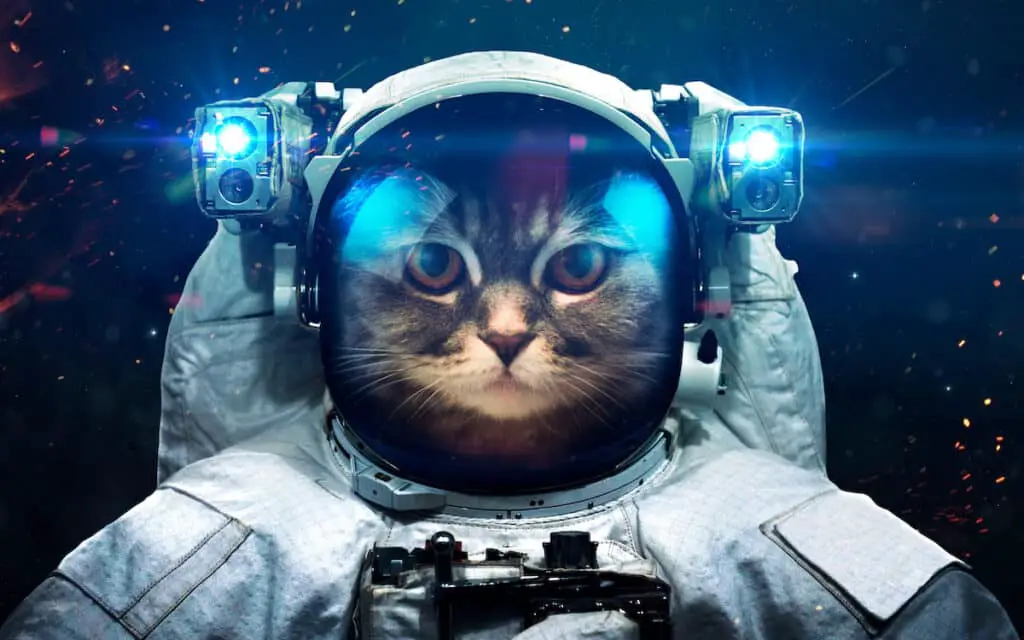It didn’t appear like Félicette was your normal astronaut. She was really light—only 5.5 pounds. She had lived much of her life on Paris’s streets. Additionally, Félicette was one of 14 cats that French scientists prepared for space travel. She ventured where no feline had gone before in 1963. Félicette was strapped into a rocket in October of that year after being selected because to her calm personality and light weight. She took a disorienting 15-minute voyage to the stars before safely landing on Earth.
However, her legacy has largely been lost. Félicette lost her place in history, unlike other space animals like Laika the dog and Ham the chimpanzee. The only cat to visit space is the subject of this tale.
Why France Sent Felines To Outer Space
The “Space Race” had heated up by the 1960s. The French thought that their own space program was insufficient, despite the impressive gains that the Soviet Union and the United States were making. Rats had been launched in rockets. However, it didn’t quite measure up to the achievements of the Soviet dog Laika, who entered space in 1957, or the American chimpanzee Ham, who did the same in 1961. Rats also didn’t provide scientists with many new insights. And the entire purpose of launching animals into space was to get insight into the potential effects of space travel on human physiology. French researchers then focused on cats, another mammal.
Michel Viso, a former veterinarian who now serves as the director of exobiology at France’s National Center for Space Studies, said that the cat was one of the species that was frequently utilized for neurophysiology research at the time. In other words, using an animal that scientists already had a good understanding of made reasonable. So, in order to achieve their new objective, researchers at the Centre d’Enseignement et de Recherches de Médecine Aéronautique (CERMA) purchased 14 female cats and began to train them as “astronauts.” One of the cats was given the name “C 341.” The serene cat in the tuxedo would later be called Félicette.
Félicette’s Voyage To Outer Space
Félicette and the other 13 cats had a thorough evaluation to determine how they would respond to space travel. They suffered imprisonment, deafening rocket noises, and even nauseating centrifuge treatments for several months while having electrodes implanted in their brains. Félicette was chosen as one of the six cats who should go to space out of all the cats. She was chosen by scientists because, unlike other cats in the study, she had maintained her weight and displayed a cool, collected manner.
One of the CERMA researchers later said that “Félicette was the appropriate cat for the task.” Any display of terror on her part would have excluded her from the experiment since it would have been impossible to decipher her brain signals. Félicette was ultimately chosen for the last mission. She was placed inside a Véronique AG1 rocket on October 18, 1963, near Hammaguir, Algeria, and launched into orbit at precisely 8:09 a.m. According to Viso, “The rocket climbed quite high, almost 157 kilometres.” She spent 15 minutes soaring through the heavens before landing on the planet as a French heroine.
The “astrocat” was affectionately dubbed Félix by the media, after the well-known cartoon. They eventually changed Félicette’s name to the feminine form because she was indeed a female. However, regrettably, her days were numbered.
The Legacy of the First Cat in Space
Félicette’s brief triumphant period was brief. Scientists euthanized her soon after she arrived back on earth so they could examine her brain. After that, Félicette’s illustrious history began to disappear. Yet why? Why is it that animals like Ham the chimpanzee and Laika the dog are remembered and praised, but Félicette was not? Robert Pearlman, a space historian and editor of the website collectSPACE, remarked, “I suppose it may be a matter of how history played out.”
The space race between the United States and the Soviet Union “was the effort that led to putting humans into space—and then, in the end, to the moon.” The French’s early achievements paled in comparison to those of the Russians and Americans because they never sent humans into space; instead, they later formed a partnership with the European Space Agency. As a result, the tale of Félicette was gradually forgotten. Even the French were unaware of her. Félicette was mistakenly represented as a male cat named Félix when a set of stamps commemorating her space trip were released, much as the media had previously reported. But in 2017, things started to shift. Then a bronze monument was ordered in honor of “Astrocat” thanks to a Kickstarter effort run by a Londoner by the name of Matthew Serge Guy.
The first and only cat to travel to space was remembered little throughout the past 54 years. He commented on the page, “She deserves a befitting memorial. Very few people are aware that a cat has traveled to space, even though other animals that have done so, including Laika the dog and Ham the chimpanzee, are well-known in popular culture and have permanent memorials. It is now time for “The Astrocat” to get the fitting memorial. Guy was successful in his efforts. A statue of Félicette that he commissioned is presently housed at the International Space University in Strasbourg, France, after he raised more than $57,000 for its creation.
The Université Toulouse III subsequently said that they would give Félicette the honorary name of their forthcoming observatory. The observatory’s “Astrocat” logo will be unveiled in 2023. As a result, Félicette is now at last receiving the respect she merits. Even though her contribution to space travel was minor and undoubtedly unintentional, it was nonetheless a contribution. Her pawprints are left behind by the astronauts and space travelers of today.














